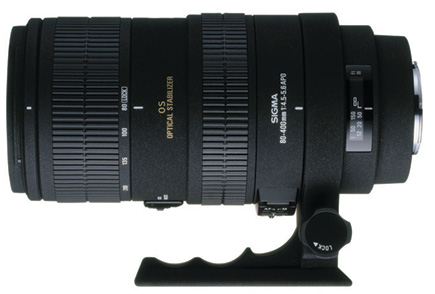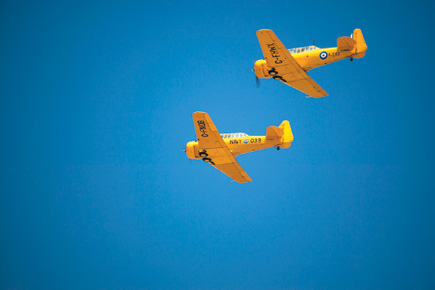Sigma's 80-400mm f/4.5-5.6 EX OS APO
First Independent-Brand Lens With Optical Image Stabilizer
Until recently, only Canon and Nikon offered interchangeable lenses with a camera shake compensating system called Image Stabilizer (IS) and Vibration Reduction (VR), respectively (see the discussion on IS and VR lens technology in our August 2004 issue, or on our website at: www.shutterbug.com). Now, Sigma has entered this market with its first OS lens, the 80-400mm f/4.5-5.6 zoom with Optical Stabilizer. Similar to IS and VR in use, the OS system employs Sigma's own proprietary technology, discussed in our sidebar below. An image stabilizer is a valuable amenity in any lens, particularly in telephotos. Because long focal lengths magnify the effects of the least camera shake, the system can help to produce sharper images in handheld shooting.

The Sigma OS system is said to produce a significant advantage: the ability to shoot at shutter speeds that are slower by about three stops. For example, we normally need to shoot at 1/1250 sec at a 250mm focal length to get razor-sharp images using a handheld camera. With the OS system activated, we should be able to get equally sharp images at 1/30 sec. That's a valuable benefit whenever a tripod is impractical or prohibited, because it allows for shooting at lower ISO settings for higher image quality without concern about blurry photos.
Lens Construction And Features
Like all Sigma pro telephoto lenses, this is a rugged piece of equipment with
a metal barrel, beautifully finished in satin black. Sure, it's large
and heavy (15 oz heavier than the Nikon 80-400mm VR model) but the lens is quite
short when used at the 80mm end. Zoom to 400mm and the internal barrel extends
by an additional 4.5", changing the overall balance. That's not
a problem when the lens is mounted on a large/rigid tripod using the removable
(rotating) tripod collar. There's a Zoom Ring Lock (available only at
80mm) useful when carrying the lens pointing downward because it prevents the
internal barrel from extending. Two other controls are included: Optical Stabilizer
mode selection and autofocus/manual focus for focusing control.
 |
|
|
Although this lens does not include
the ultrasonic (HSM) focus motor common on pro-grade Sigma telephotos, the focus
ring does not rotate during autofocus operation and full-time manual focus override
is available. (After focus acquisition in autofocus mode, focus can be touched
up without switching to manual focus mode.) Manual focus operation is smooth,
with just the right amount of friction for a familiar feel. Focusing is internal
so the front element does not rotate; hence the effect of a polarizer or graduated
filter does not change during focusing (or zooming).
With a Canon EOS-3 and EOS-1Ds, autofocus was quick and fairly quiet, though
not lightning fast or silent as it is with Sigma HSM zooms. Focus tracking of
trucks speeding along a freeway was very good, with a series of 10 frames all
sharply rendered. With erratic subjects such as flying birds or track and field
competitors, I would want a lens with ultrasonic focus motor, such as the Sigma
500mm f/4.5 EX APO HSM.
This zoom's optical design includes three Special Low Dispersion glass
elements to correct chromatic aberration to optimize image sharpness and to
eliminate color fringing around subjects even at the widest aperture at long
focal lengths. The diaphragm has nine blades in order to render out-of-focus
highlights in the background of an image as round--not hexagonal--at
all apertures, for a more natural effect.
 |
|
|
Performance Evaluation
The optics of the Sigma 80-400mm f/4.5-5.6 EX OS APO lens proved to be superb,
producing numerous images with moderately high contrast, great clarity, accurate
color reproduction and definition of fine detail. At maximum aperture in the
80-300mm range, central sharpness is exceptional while edge sharpness is very
good. I did not hesitate to shoot at the widest apertures at these focal lengths
but stopping down to f/8 produced images that were razor sharp across the entire
frame, suitable for a poster-size reproduction.
- Log in or register to post comments

































